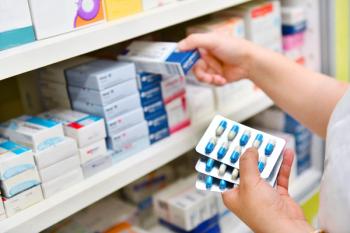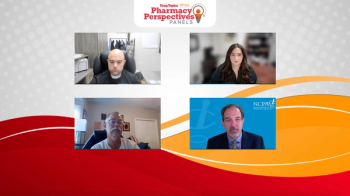
Technology Tools Increase Patient Safety in the Pharmacy
From automated medication dispensing systems to telepharmacy services, technology can help reduce the risk of adverse patient events.
Safety is one of—if not the—the most important things when it comes to strong pharmacy care.
There are plenty of tools available to help improve safety: Pharmacy automation systems improve medication dispensing accuracy and efficiency, reducing the risk of errors; pharmacy dispensing software helps pharmacists verify prescription accuracy and detect potential drug interactions; electronic health records (EHRs) facilitate comprehensive patient record-keeping, enhancing patient care and safety; and telepharmacy services enable remote pharmacist consultations, expanding access to pharmaceutical care and medication management.
As an added bonus, technology allows pharmacists to easily communicate with patients, which is vital when safety comes into play.
Timely communication can be important in many cases, including dose changes, drug recalls, delays in therapy, drug interventions, resolving adverse drug reactions, and prior authorization notifications. Additionally, 2-way texting allows pharmacists to quickly resolve pharmacy issues to get medications more safely and timely to patients.
Tertiary sources, like Lexicomp and Micromedex, help to ensure clinical appropriateness of drug interactions and assist with dosage adjustments and medication optimization, and data med adherence software programs can be utilized to measure medication adherence.
Crystal Riggs, PharmD, is senior vice president of pharmacy at Curative, which uses GeneSight as a testing tool that helps identify if a drug is appropriate or if it may cause unwanted side effects. She shared a story of a recent technology use case: The Curative pharmacy team reviewed a case for an antidepressant and was initially going to recommend another SSRI as an alternative. However, after running and then reviewing the testing results from GeneSight, it was able to modify its decision effectively.
“Given the member’s history with a specific medical reaction to SSRIs, GeneSight was able to help us determine that the member was not a candidate for all SSRIs, and another drug with a different mechanism was approved instead,” Riggs explained.
Medication management is also an increasingly critical area where technology can assist in maintaining and ensuring patient safety. In the United States, 7000 to 9000 people die due to medication errors each year, with many more patients negatively impacted.
Paul Elizondo, chief innovation officer at IntelliGuard, noted that technology can be used to apply powerful tracking innovation that enables hospitals and pharmacies to trace and manage medications and critical inventory. For example, IntelliGuard provides Smart Cabinets, which provide temperature-controlled critical inventory management, supply chain solutions for pharmacy, and anesthesia medication control.
“Data insights are another area where medication management is being transformed,” Elizondo said. “RFID-enabled cloud analytics engines are transforming medication inventory data into a strategic business asset. This technology empowers pharmacies to immediately identify which drugs are in short supply—critical at a time when drug shortages are rampant, recalled, or expiring. It also provides visibility into anesthesia, specialty pharma, and consignment workflows.”
Blockchain technology is anticipated to enhance the security and transparency of pharmaceutical supply chains in the year ahead. By enabling secure tracking of medications from manufacturer to patient, blockchain can help mitigate counterfeit drugs and ensure authenticity.
Joe Tammaro, BSPharm, vice president of pharmacy and patient solutions at DrFirst, noted that one of the most recent innovations focuses on processing e-prescriptions, using clinical-grade AI to improve efficiency and safety by translating and inferring missing data. The AI also converts NDCs in e-prescriptions to the specific drugs on a pharmacy’s shelves. All of this can significantly ease workflow for busy pharmacy staff and help prevent errors.
“Another innovation allows pharmacies to automatically message patients with educational information shortly after their e-prescriptions arrive,” he said. “In addition to helping avoid prescription abandonment and restocking, the educational component encourages adherence and supports safe medication use.”
Hypertension can be a silent killer, and many patients do not see the value of taking their medications regularly. Yet, non-adherence can lead to adverse events, including heart attack and stroke.
“Reducing the number of adverse events each year ultimately saves lives, and pharmacists should actively work to improve this outcome,” Riggs said “As we continue to learn more about medicine and pharmacogenomics, ensuring safety and efficacy for everyone may be just as simple as taking the time to really understand a patient’s DNA profile.”
Mitigating bleeding risks for anticoagulants, identifying drug interactions with key CYP enzymes, or recognizing a pregnant patient earlier in treatment can help pharmacists dispense the right drug at the right time, in turn reducing both hospitalizations and health care costs.
Pharmacies should look at both sides of the innovation coin when considering what technologies to use—the new and the established. While AI should be on every pharmacy’s list for evaluation, pharmacies should not lose sight of what technology they may have missed.
Newsletter
Pharmacy practice is always changing. Stay ahead of the curve with the Drug Topics newsletter and get the latest drug information, industry trends, and patient care tips.





























































































































